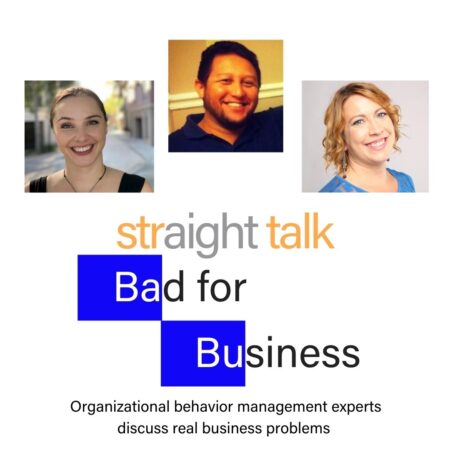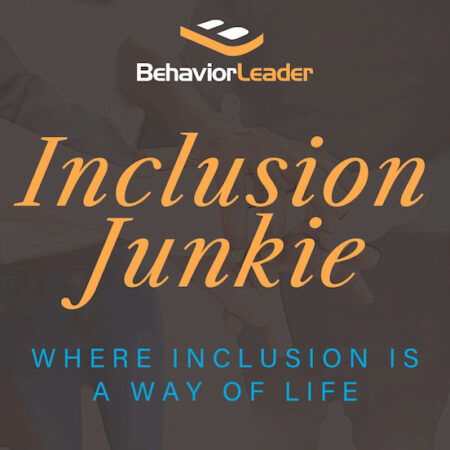In a previous article, we discussed why diversity is so important for organizations and the errors company leaders make when focusing on diversity. Simply put, diversity without inclusion is harmful. Creating innovative, forward-thinking, successful businesses starts from the inside out, meaning that you have to first fix what is happening within before you focus on adding new individuals. Every person wants to come to work as their authentic self. They want to know that they are valued, that they belong and that they are contributing to the shared purpose of the organization. Unfortunately, when organizations focus on diversity without first ensuring they have created a culture that celebrates and builds upon diverse backgrounds, thoughts, experiences, and strengths, they end up harming the very people who were targeted to bring in to the company. This is the piece of the puzzle so many research articles don’t tell you. They simply say “diversity doesn’t always work”, but the reality is that diversity doesn’t work without inclusion.

What is inclusion in the workplace?
The idea of inclusion is rather simple; however, the practice has proven much more difficult for many organizations. The reason? Inclusion must become a part of the culture, a daily practice, a way of life while at work. Unfortunately, diversity and inclusion are still being treated as a one-off strategic initiative and too many organizations think hiring a diversity and inclusion coordinator or director will solve all of their problems. This is usually not the case; however. While diversity and inclusion directors are excellent first steps and necessary positions, individuals in this position cannot be successful without complete support from the leaders and inclusion into every aspect of the organization.
Consider the culture of your current organization. What does it feel like to enter the doors, log in to a video call, or complete a project? Do you find that you show up as someone different than who you are at home, with your family and friends? Do you monitor what you say or how you say it? Have you ever overheard a joke that made you uncomfortable? Or have you ever heard gossip about a certain individual or negative comments about a group of individuals? If none of these have ever happened to you, one of two things is true. You either are not part of a group that has been discriminated against, marginalized, and excluded in some way; or, you work for an inclusive organization. Our hope is that one day the latter will always be the answer. Troublingly right now, it is usually the former.
Understanding that diversity in the workplace is the measure of the differences that exist among the people in the workplace. You can determine this by looking at the number of people from different backgrounds and their collective strengths and experiences. Then, examine the turnover numbers to determine if individuals who share a commonality are more likely to leave the organization than others. Next, examine all levels of the organization. Are top levels of leadership as diverse as entry-level staff? Finally, look around the room during meetings. Do you find that all meetings have a similar level of diversity, or are some meetings more diverse than others? Each of these considerations will help determine the level of diversity as well as provide an indication of the level of inclusion that currently exists.
Inclusion is what you do to either bring people in or push them out. Inclusion is the set of behaviors – the things we do, say, think and feel – the results in each person belonging and being highly engaged in the organization. If you find that diversity is more prevalent in the lower-level positions in the organization, chances are inclusion is not a current practice. If you see that certain teams are more homogeneous than others, changes are inclusion is still not a habit. If you learn that there are individuals who constantly monitor their words, voice level and intonation, and behaviors while they are at work, it is highly likely that your workplace is not inclusive.
How do you know if your organization is inclusive?
Understanding the difference between diversity and inclusion is the first step. The second step is building the practices that make inclusion a culture and value, rather than a priority. Priorities change with the moment. Priorities are determined based on the most pressing issues. Inclusion as a priority will not last, as other initiatives or needs will surface and inclusion will be pushed aside. However, when inclusion is a value and part of the organizational culture, priorities can shift without affecting the level of inclusion in the workplace.
Here are some questions that will help determine if your organization is promoting diversity and inclusion in the workplace:
- Is inclusion discussed regularly in the workplace?
- Has your organization evaluated policies and procedures through a lens of inclusion, ensuring both their practice and wording are fully inclusive?
- Does your organization consider things like holidays and provide flexibility to individuals who celebrate holidays other than the traditional 10 given in the United States?
- Do you find that diversity and inclusion training is seldom, focuses on surface issues, and is treated as something separate than the regular practice of the organization?
- Do leaders set the example by building positive relationships with each employee?
- Do you receive regular feedback on both what you are doing well as well as what needs to be corrected?
- Do individuals approach one another with curiosity about who they are as a person?
- Are individuals treated as such and not asked or expected to represent their cultural background?
- Is employee feedback welcomed and sought out as regular practice?
- Are non-majority voices heard and valued?
The more “yes” answers you have to these questions, the more inclusive your organization may be. However, don’t stop with your opinion. The best measure of inclusion is to talk with everyone within the organization. If you find that individuals answer no to more questions that you, chances are your organization is not as inclusive as you think.
While inclusion is not a difficult concept to understand, it is difficult to practice for some. The skill of bringing people together and ensuring that one’s actions, words, thoughts, and feelings focus on building strengths through the expression of differences must be specifically developed and practiced daily. Organizations that focus on the daily practice of inclusion are the ones that master it, become more innovative, and celebrate long-term success. Those that treat diversity and inclusion as a priority that needs focus until the next big thing comes along are likely to continue to harm the very individuals they are hoping to bring in to create better success.




